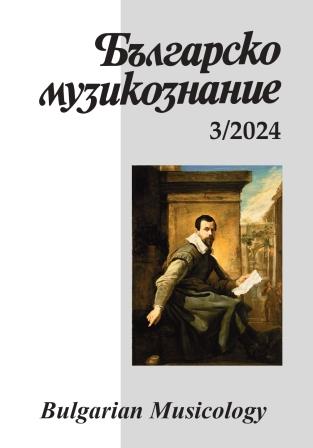Историческото значение на Жоскеновия музикалнокриптографски похват soggetto cavato
The Historical significance of Josquin’s soggetto cavato cryptographic Technique
Author(s): Iliya GramatikovSubject(s): Fine Arts / Performing Arts, Music
Published by: Институт за изследване на изкуствата, Българска академия на науките
Keywords: Josquin des Pres; musical cryptography; musical enigmas; soggetto cavato; Missa Hercules dux Ferrariae
Summary/Abstract: Within the history of music, the name of Josquin des Pres is associated, besides his notable oeuvre, with the invention and introduction of the soggetto cavato musical cryptographic technique into compositional practice. The present study examines in detail the first use of this technique in Josquin’s emblematic work Missa Hercules dux Ferrariae, which is also the first mass known to researchers written in praise of a ruler. On an inherent musical level, the structure of the mass is analysed with a focus on it being based on an unprecedented cantus firmus. In a broader socio-cultural context, the allegorical meaning of the work is also discussed – a meaning embedded in the cantus firmus in question through the soggetto cavato cryptographic technique. The mass is also seen in the context of the Renaissance tradition of musical enigmas. In addition, it is considered a symbolic sound portrait of a ruler – a musical glorification that hybridised a liturgical genre with a political ceremonial. The transformation of this type of sacralised eulogy of a secular figure into a musical tradition is traced. Examples are given of several other compositions based on the soggetto cavato technique following the model of Josquin’s mass.
Journal: Българско музикознание
- Issue Year: 2024
- Issue No: 3
- Page Range: 60-76
- Page Count: 17
- Language: Bulgarian
- Content File-PDF

